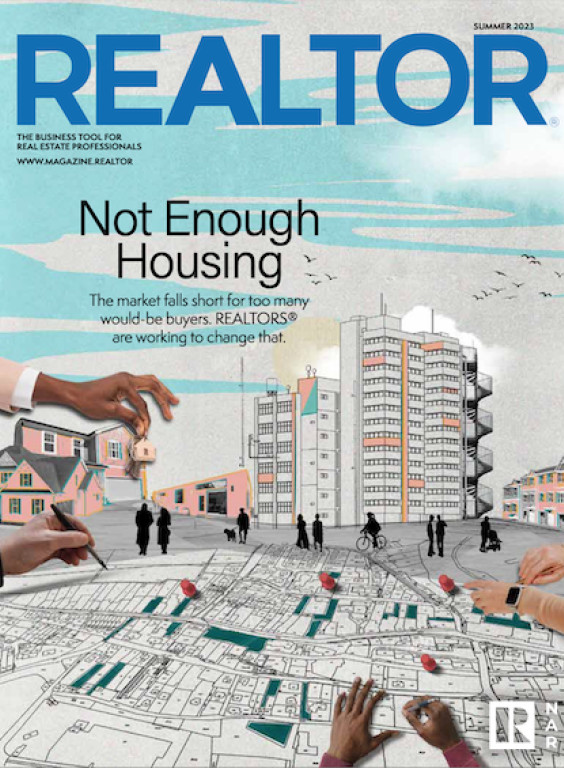For years, the term “workforce housing” has defined a subset of affordable housing for those who earn between 60% and 120% of an area’s median income. Now, the term is losing favor.
Some feel it suggests that those who earn less than 60% of their AMI aren’t part of their area’s workforce. “The phrase has an unfair, exclusive characterization,” says Michael Liu, senior partner and design principal for The Architectural Team (TAT).
Miriam Axel-Lute, CEO and editor-in-chief of Shelterforce, a publication focused on affordable housing, agrees. “It adds a negative stigma to those with lower incomes,” she says. She prefers to call it “essential housing” since many jobs held by those needing the housing are essential to a community such as nurses, firefighters, police officers, sanitation workers and teachers.
G. Kimball Hart, general partner at for-profit Good Works, which builds, owns and operates affordable workforce apartments, puts it this way: “If you get up in the morning and are on your way to work, take one child to daycare, another to school, stop at a Starbucks or other coffee house, and then pick up a prescription at a drugstore, you’ve already come into contact with four of our residents who keep your community running.” He favors the phrase “attainable housing.”
Those needing the housing earn just a little too much to be eligible for investor-financed tax-credit properties and too little for market-rate housing, and fall into the “missing middle.”
To provide housing for all is more difficult in some states than others. In California, it’s particularly tough due to the high cost of land and construction, along with high interest rates, factors that aren’t anticipated to change substantially in the near future, says Matt Benwitt, an associate with Lee & Associates–LA North/Ventura.
As a result, communities have to muster the resources to provide alternatives, whether through new builds or retrofits. The good news is that more are doing so in spite of resistance from NIMBY proponents. “Many say they want housing for all, just not near them,” Axel-Lute says.
Restrictive zoning ordinances impede the goal of creating affordable shelter for a community’s workforce, says Cheryl Cort, policy director for the Coalition for Smarter Growth, whose goal is to make the case for walkable, bikeable and transit-oriented communities in the Washington, D.C., metro area. The group advocates for solutions that bring multifamily housing residents closer to jobs and services.
Financing tools, the municipality and the developer all influence whether affordable units are kept separate or mixed in with market-rate units, says Benwitt. Good Works’ Ashburn Chase development in Ashburn, Va., features 96 units divided between two four-story buildings. There are 10 units for people with developmental disabilities, plus a community room, computer room, fitness center and tot lot. Ashburn Chase is part of a larger mixed-income development that represents a collaboration with home builder Toll Brothers and Rockville, Md.–based TM Associates, a developer and property manager. During the recent pandemic, the building’s resident service manager worked with tenants to raise over $200,000 in federal rent subsidies so that unemployed residents weren’t evicted, Hart says. The company likes to use Low-Income Housing Tax Credits because LIHTCs count under the Community Reinvestment Act. “This gives banks with a local footprint a big incentive to support attainable housing,” Hart says.
John B. Cruz III, whose three-generation Cruz Companies has provided affordable housing and management since 1948, likes to develop housing that sits near but separate from market-rate housing. At its 15-acre Harvard Commons in Dorchester, Mass., 45 affordable townhome rental apartments are adjacent to 54 single-family, market-rate homes, many valued at $1 million. “Amenities here that many [lower-income people] typically can’t find in their areas consist of a community center, gym, and child care facility,” Cruz says. More important, he says, is that those living in affordable housing are near role models who achieved financial success through homeownership.
Architect Liu has worked on housing initiatives that follow the strategy of mixing incomes in the same building. Gateway North Apartments in suburban Lynn, Mass., features 71 units—53 designated as “affordable,” 10 as “workforce” and eight as market-rate units. The building was funded by the state’s Workforce Housing Initiative. The one-, two-, and three-bedroom apartments share a gym, community room open to the neighborhood, and patio. The vacant parking lot on which Gateway North was built was chosen in part for proximity to a business and retail hub, community college, commuter rail station and highways. “Being near transportation helps reduce household costs,” Liu says.
Real estate professionals can educate those who fear that denser multifamily housing may cause house values to plummet, Axel-Lute says. Her organization published a study showing otherwise. Cruz agrees and says that prices continue to appreciate.
In addition, the affordable and workforce category continues to offer good investment potential due to still low inventory and high for-sale prices, Benwitt says.
For REALTORS® and associations that want to get involved in solving the housing challenges for workers in their community, the National Association
of REALTORS® has created “Expanding Housing Opportunity,” a toolkit that brings together guides, resources, and success stories.







